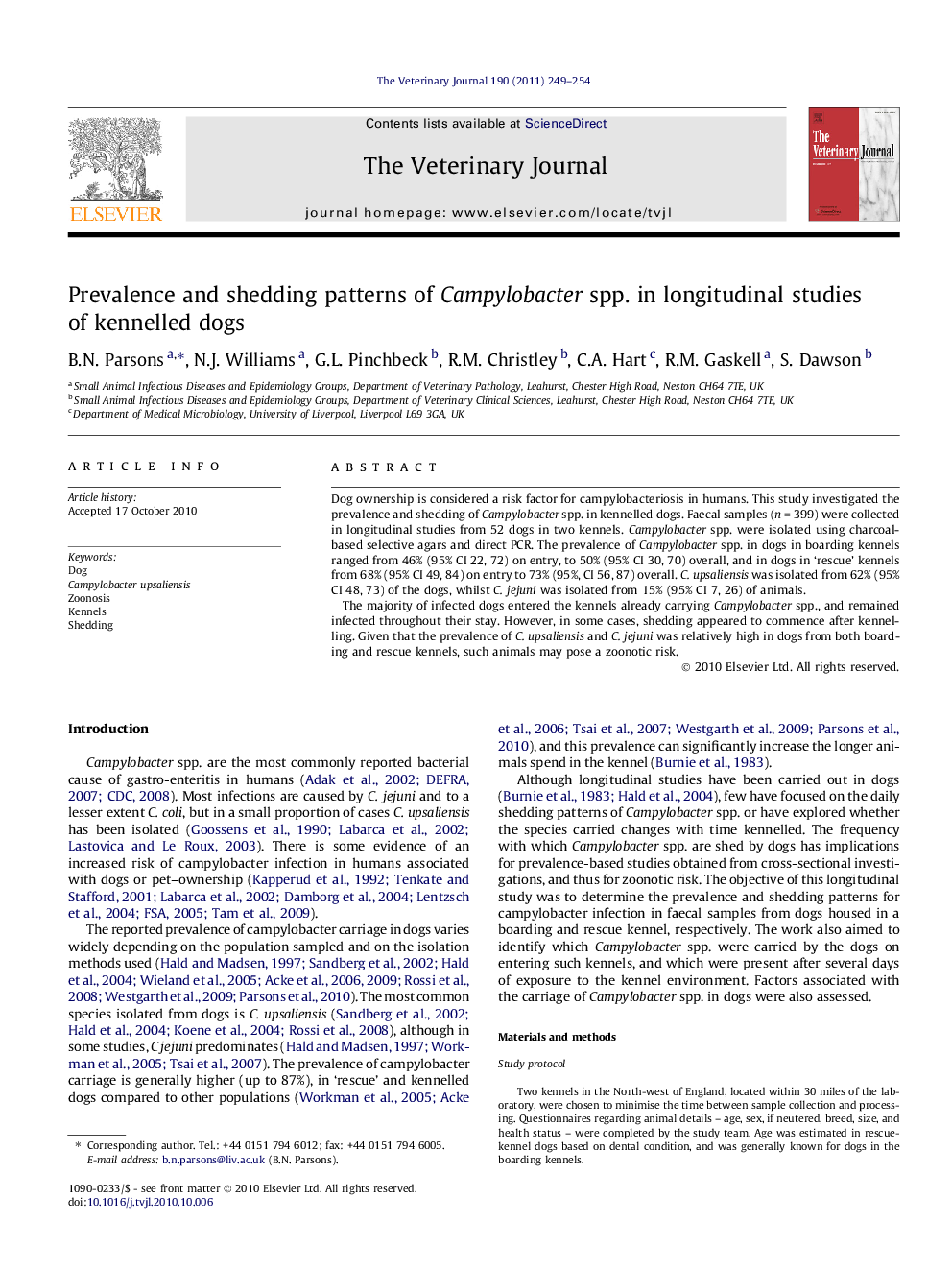| Article ID | Journal | Published Year | Pages | File Type |
|---|---|---|---|---|
| 2464506 | The Veterinary Journal | 2011 | 6 Pages |
Dog ownership is considered a risk factor for campylobacteriosis in humans. This study investigated the prevalence and shedding of Campylobacter spp. in kennelled dogs. Faecal samples (n = 399) were collected in longitudinal studies from 52 dogs in two kennels. Campylobacter spp. were isolated using charcoal-based selective agars and direct PCR. The prevalence of Campylobacter spp. in dogs in boarding kennels ranged from 46% (95% CI 22, 72) on entry, to 50% (95% CI 30, 70) overall, and in dogs in ‘rescue’ kennels from 68% (95% CI 49, 84) on entry to 73% (95%, CI 56, 87) overall. C. upsaliensis was isolated from 62% (95% CI 48, 73) of the dogs, whilst C. jejuni was isolated from 15% (95% CI 7, 26) of animals.The majority of infected dogs entered the kennels already carrying Campylobacter spp., and remained infected throughout their stay. However, in some cases, shedding appeared to commence after kennelling. Given that the prevalence of C. upsaliensis and C. jejuni was relatively high in dogs from both boarding and rescue kennels, such animals may pose a zoonotic risk.
